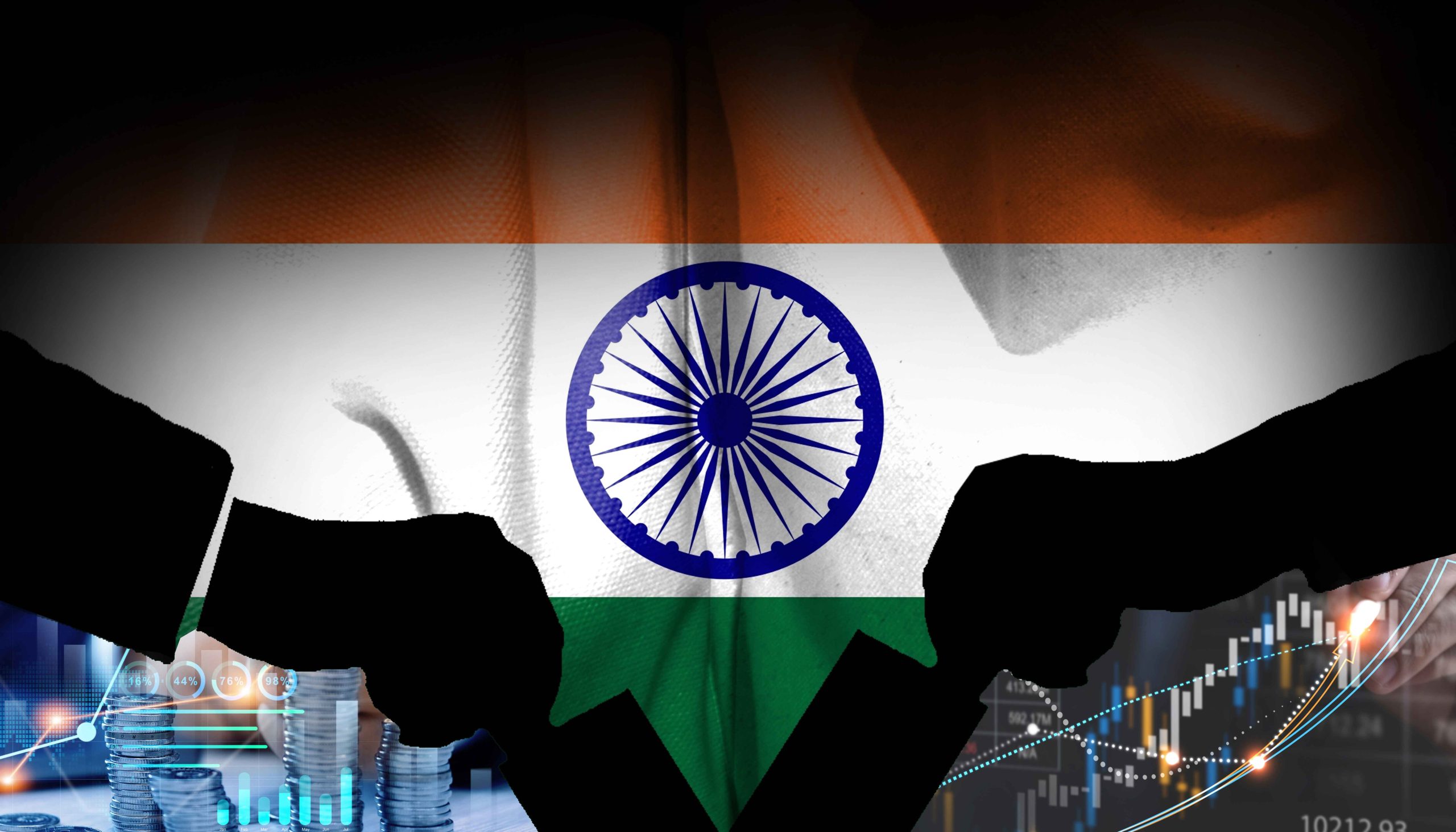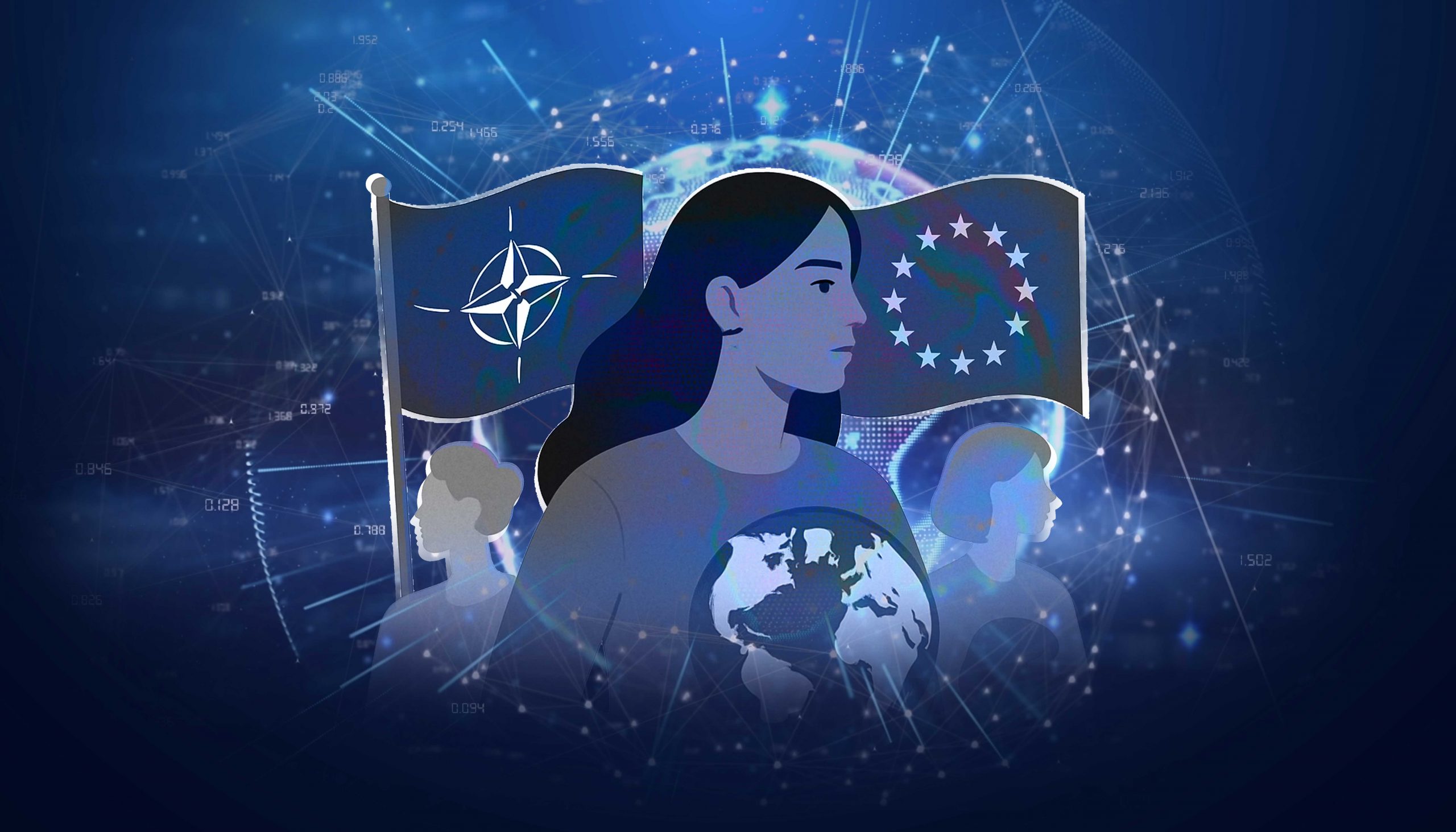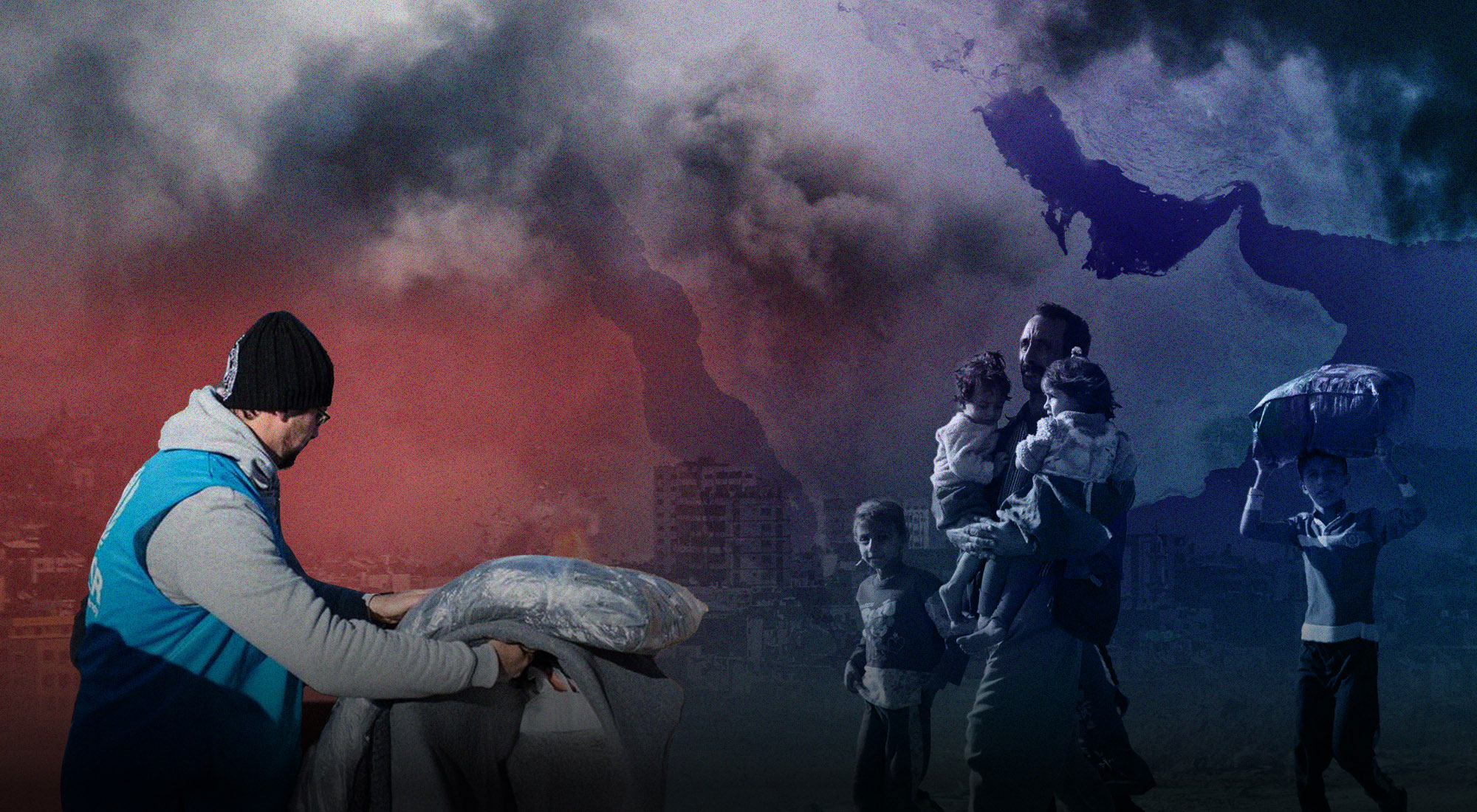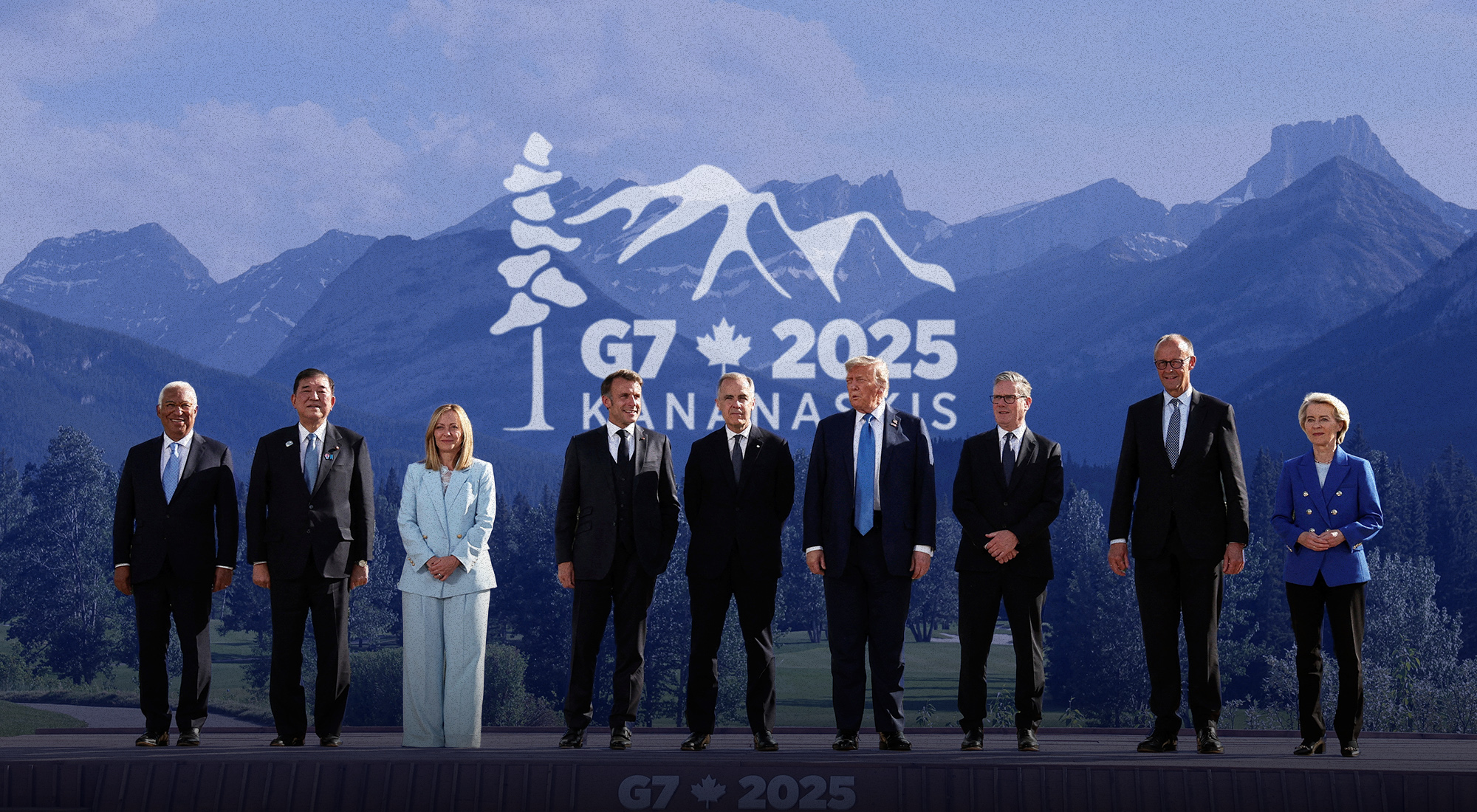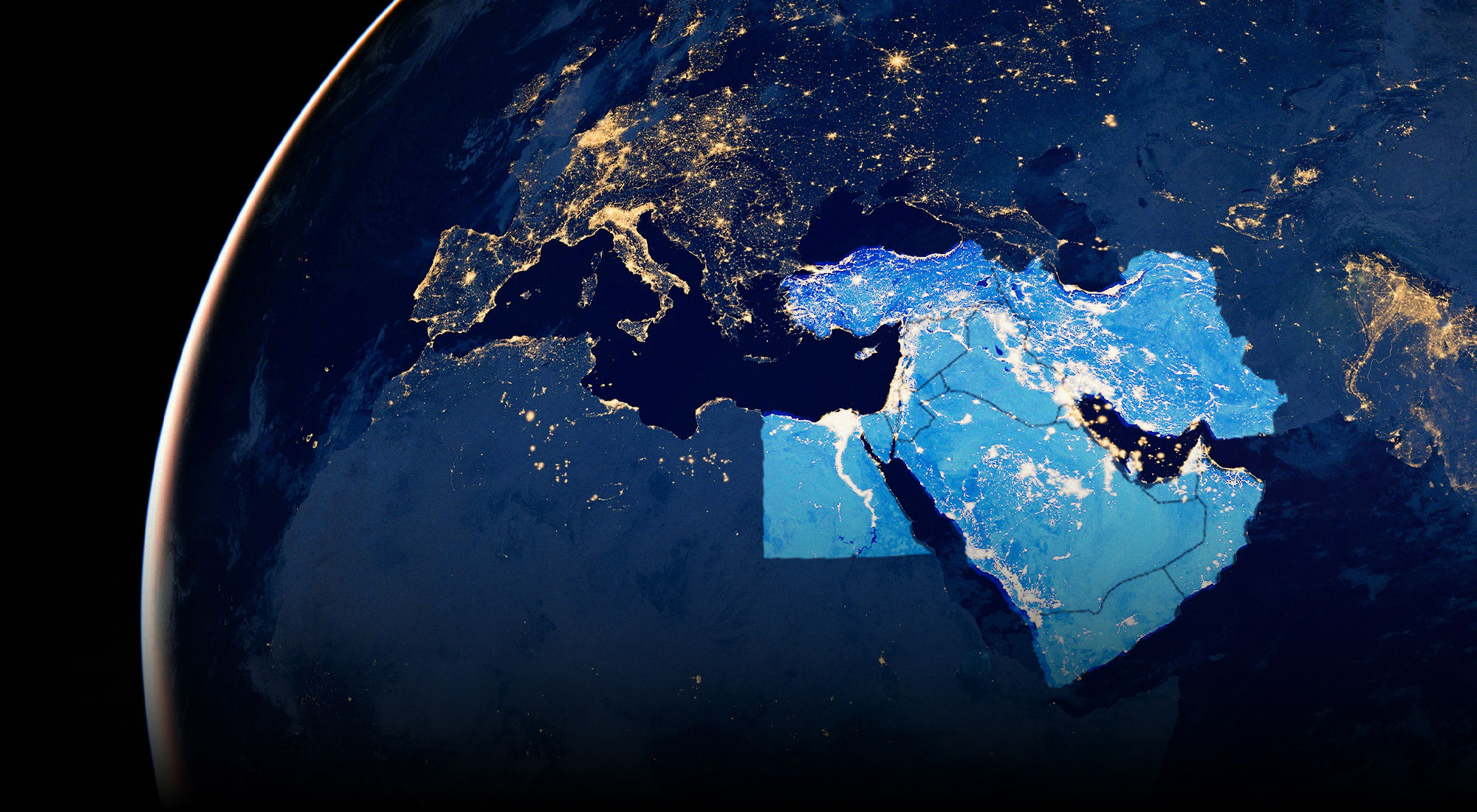As the results of the 2024 general elections flashed across millions of television screens in India on 4 June, there was a sense of stunned disbelief. As the day progressed, it became clear that the ruling Bharatiya Janata Party (BJP) had been trounced in numerous constituencies and that the party would not cross the 370 mark in the Lok Sabha (the lower house of the parliament) that exit polls and its own leaders had confidently foretold.
In the event, the BJP secured just 240 seats, losing about 60 seats and missing the majority mark of 272. With the help of its allies, it crossed the 300 mark, enabling its leader, Narendra Modi, to lead the government as Prime Minister for the third time. For the first time in his political career, i.e., after 12 years as chief minister of Gujarat and 10 years as prime minister, Modi is now heading a coalition government and depending on two regional partners to stay in power.
The majority of analysts have welcomed this dramatic development. French commentator Christophe Jaffrelot said the “tremor is significant” and predicted “aftershocks” as the political order responds to the election result.[1] The Financial Times headlined its article, “The humbling of Narendra Modi,”[2] while Indian observer Pratap Bhanu Mehta simply said: “Indian democracy has triumphed against the odds.”[3] Vaishna Roy, the editor of India’s premier political magazine, Frontline, recalled her concerns relating to the earlier trends in Indian politics, i.e., “untrammelled power, the signs of full-blown megalomania and narcissism on display, the dangers of hate-speech and the demonising of certain communities.”[4]
What surprised observers was that the BJP suffered serious losses in the northern state of Uttar Pradesh, the party’s crucial ideological and political support base. Here, the party lost 29 seats, including the Faizabad constituency, which includes the town of Ayodhya, the site of the grand temple that Modi had inaugurated with much fanfare just a few months earlier, thus fulfilling his party’s solemn commitment to its followers. Indian commentator Sanjay Kapoor points out that this defeat reflected the “palpable, seething rage” of the voters, many of them traditional BJP supporters, over concerns relating to unemployment and inflation.[5]
The Hindutva movement
The central driving force of the Modi government over the last decade has been to use political power to transform the Indian state into a Hindu nation, so that “Hinduism [is] at the center of public life [and] makes full Indian citizenship contingent on being Hindu.”[6] This vision draws upon a century-old cultural and political movement in India that had, till recently, largely remained at the margins of Indian politics. The founding protagonist of the Hindu nationalist movement was Vinayak Damodar Savarkar, later extolled as “Veer” [Brave] Savarkar (1883-1966). He is the first ideologue of political Hinduism to which he gave the title, Hindutva [‘Hinduness’], which is the avowed ideology of the Sangh Parivar[7] today.
While Savarkar’s writings provided the intellectual basis for the Hindutva movement, it received its political impetus from the proposal to construct a temple dedicated to Lord Ram at Ayodhya, on the site of a mosque built in the early 16th century. As Thomas Blom Hansen has noted, the significance of the temple agitations goes well beyond the restoration of an ancient temple.[8] It exemplified the resurgence of the Hindu and his rejuvenation after several centuries of defeat, feebleness and marginalization in his own land. It also affirmed that Indian culture would be essentially Hindu in content, a robust rejection of pluralism and unity in diversity touted by Indian secularists over the last few decades.
Hindutva under Modi
The initiatives to define India’s identity as a Hindu nation founded on the systematic “othering” of the Muslim community were taken forward robustly during the period of the first Modi government from 2014 itself. Ashok Swain noted in February 2017: “It is not only economic deprivation anymore, Modi’s India has also brought political exclusion for the Muslim minority.”[9]
Writing in June 2024, Harsh Mander said:
The Modi decade was marked by a tacit repudiation of the Constitution, powered by Hindutva triumphalism that rapidly transformed the country into a republic of hate and fear. India’s 200 million Muslims were targeted routinely with genocidal hate speech and an epidemic of hate lynching … and citizenship law amendments threatened their equal citizenship.[10]
Prime Minister Modi, in his third term, faces challenges regarding the economy and foreign policy. These are discussed in the following sections.
The Indian economy
The state of the Indian economy has been an area of serious dispute between the Modi government and its critics, with one applauding the high growth rates, and the other focusing on unemployment and inequality. The government has for several years taken credit for generating the highest growth rates globally. India is today the fifth-largest economy in the world and could reach the third rank in a decade. OECD projections have shown that India will have the following growth rates over the next decade:[11]
2022-2025: 8.2% (China: 4.9%)
2026-2030: 5.9% (China: 3.7%)
2031-2035: 4.7% (China: 2.9%)
The Indian economist, DK Srivastava, has argued that, subject to certain reform measures being taken, the Indian economy, in market exchange terms, could cross the threshold of $5 trillion in FY27; $10 trillion in FY34; and $20 trillion in FY 43.[12] The proposed reform measures include increased government expenditure on education, technology development, health and infrastructure, precisely the areas where serious shortcomings have been noted by Prime Minister Modi’s critics.
A New York Times reporter noted after the elections that “India remains a land of economic peril for hundreds of millions of people, as well as a country defined by astonishing contrasts of wealth.”[13] A local businessman in Uttar Pradesh was quoted as saying: “People will not always fall for the caste or temple-mosque politics. They also want to see development.”[14]
The recent elections revealed that unemployment is a serious concern for the people at large. With a working-age population of approximately one billion, the country only offers employment to around 430 million people. The majority of these jobs are in the informal sector, without proper work, wages or workplace protections.[15] National economic challenges are compounded by the fact that, in India, the manufacturing sector contributes only 13% to the national economy, a lower share than a decade ago, when Modi came to power.
A far bigger problem is that of inequality: 40% of the national wealth is in the hands of 1% of the population, most of whom are viewed as cronies of the government. The economist Thomas Piketty has been part of a study that concluded that India under Prime Minister Modi is now more unequal than under British rule and has warned that such inequality levels cannot be sustained without major social and political upheaval. Obviously, the election results reflect, to a great extent, this pervasive dissatisfaction.[16]
The political economist, CP Chandrashekhar, has put forward a broader indictment of the economic policies of the Modi government; he contends that policy decisions “seem to have been driven by the demands of propaganda rather than a concern with substance and impact.”[17] For instance, he argues, while grandiose schemes for infrastructure development and welfare have been announced, the actual budgetary allocations to fund them have been kept at “woefully inadequate levels.” Again, the government supports the accumulation of assets and wealth by favored wealth holders, leading to “unusual increase of income and wealth concentration in the hands of a few business houses, which in turn are direct or indirect sources of political funding.”[18]
India’s foreign policy challenges
During the recent election campaign, Prime Minister Modi frequently took credit for India’s high global stature. Thus, at an election rally, he asserted: “When India speaks at global forums now, the whole world pays rapt attention. When India takes decisions, the world tries to match its steps.”[19] However, beyond these expressions of misplaced bravado, foreign policy was not a priority concern during the election campaign. With this in mind, continuity rather than change is likely to define India’s foreign policy in Modi’s third term.
In his first remarks after being reconfirmed as External Affairs Minister, Dr. S. Jaishankar said that two principles would guide the country’s foreign policy approach: “Bharat First” (i.e., ‘India First’) and Vasudhaiva Kutumbakam (‘All the world is one family’). These principles, the minister said, would position India as “Vishwa Bandhu” (‘Friend of the world’). Jaishankar added that resolving the remaining issues relating to the Line of Actual Control (LAC) with China would be a priority concern, along with “India’s Neighborhood First” policy.
Platitudes aside, the principal foreign policy challenges for India will be the management of its ties with China and the U.S. while retaining its commitment to strategic autonomy and reshaping its policy approach to the Middle East to impart greater strategic content to India’s place in the region.
The interplay of the U.S.-India-China triangle
In an excellent study on China’s perceptions and policies towards India, former Indian Foreign Secretary Vijay Gokhale has pointed out that, starting in 2018, as the U.S. stepped up its challenge to China’s rise, President Xi Jinping spoke of a “new period of turbulence and transformation” and China focused on the U.S.’ policies towards itself. China only paid attention to India in terms of the U.S. approach to China, not as a stand-alone independent role-player.[20]
In light of this, Gokhale notes that tensions at the Sino-India border began in 2013 and points out: “It is not a coincidence that this is happening when India is enhancing its strategic relations with the United States.”[21] These border tensions have culminated in the ongoing standoff at Ladakh since April 2020, which, in July, caused the deaths of about twenty Indian soldiers, including a colonel, as well as some Chinese casualties.
Besides disputes over territory, India is also concerned about expanding Chinese influence in the neighboring countries of South Asia and the increasing presence of its warships in the Indian Ocean, both spheres being seen by India as part of its crucial strategic space.
Above all, India also has concerns about the substantial ties that China has with its neighbor, Pakistan. India has been criticizing Pakistan for over three decades for supporting cross-border terrorism. Given the “all-weather” relationship that Pakistan has with China, in the event of ties with China deteriorating precipitately, India fears it might face a two-front conflict.
With the significant asymmetry in India’s equation vis-à-vis China, India has over the last decade expanded its security ties with the third part of the triangle—the U.S. These include increased defense purchases, substantial interoperability agreements to facilitate military cooperation, and institutionalized dialogue platforms at foreign and defense minister levels, all backed by frequent summit-level meetings.[22] However, India has retained its commitment to strategic autonomy by maintaining close ties with Russia and participating actively in groupings, such as BRICS and the Shanghai Cooperation Organisation, that include China.
There is little doubt that the Sino-Indian confrontation at the border in Ladakh and growing Sino-U.S. differences in the Indo-Pacific have provided a significant push to Indo-U.S. bilateral ties. Following the visit of Prime Minister Modi to the U.S. in May 2022, there is a fresh focus on strategic technology partnership and defense industrial cooperation, which will involve governments, businesses and academia. The U.S. has announced that it will make India “a logistical hub for the United States” in the Indo-Pacific as well as integrate the Indian defense industry with the global supply chain of U.S. defense and aerospace companies.[23]
Given this context, Gokhale has called for a review by China of its approach towards India, particularly in light of the fact that, given India’s increasing capacities, China should no longer believe that its confrontations at the border can remain low-cost initiatives; India has enough clout in the Indian Ocean and the littoral to impose high costs on Chinese provocations.[24]
Gokhale has strongly recommended the resumption of political dialogue between the two countries, which has been suspended since November 2019. China on its part has regularly been calling for dialogue “to maintain strategic communication, to align development goals, and to manage disputes without aggravation or escalation.”[25] But for such dialogue to be meaningful, China will need to shed its approach of viewing India as an appendage to the state of Sino-U.S. ties and see India as a strategic role-player in the region, with its own interests and agency. This will be a major challenge for the Modi government in its third term.
Reshaping India’s role in the Middle East
Since the end of the Cold War, India and the countries of the Gulf Cooperation Council (GCC) have worked to build strategic partnerships based on the solid foundations provided by energy and economic ties and the presence of more than eight-million-strong Indian community in the GCC countries. The first strategic partnership agreement, encompassing political, defense, security and economic ties, was signed with Saudi Arabia in February 2010. Today, India has such partnership agreements with all the GCC countries, as well as Iran and Israel.
However, it is noteworthy that India’s approach to the region has remained bilateral and transactional: India has substantial ties with each country individually, but, unlike China, it has no agreement either with the GCC or the Arab League as regional groupings. Thus, India does not have a collective, regionwide approach to West Asia. It has avoided involving itself in addressing disputes in the region and playing a diplomatic role in promoting dialogue between estranged neighbors or promoting peace and stability in the conflict-prone region that has been made even more insecure by the ongoing war in Gaza.
However, several issues continue to bedevil regional security, most importantly the Iranian nuclear program, the continuing Saudi-Iranian competition in the region and the politicization of sectarianism.
While China’s role in promoting the normalization of ties between Saudi Arabia and Iran is laudable, it has only created the basis for dialogue, with the resolution of differences a long way off. The agreement is no magic wand that can get rid of regional divisions with a single wave, particularly given that the U.S. sees itself engaged in global competition with China and sees no reason to give it political space and diplomatic success in the region.
Second, the Palestine issue is now central to regional security concerns. The dysfunctional state of U.S. politics and its near-total loss of standing as a security provider have provided opportunities for other more credible players; India, in association with other likeminded Asian states, can be an effective interlocutor in this imbroglio.
Third, the security of maritime space covering the Arabian Gulf, the Gulf of Aden and the Red Sea has become fragile, with competition among regional powers and the increasing big powers’ contentions across the Indian Ocean. The attacks by the Houthis on regional shipping have diverted commercial maritime movement around the Cape of Good Hope, while the exchange of firepower between the Houthis and Western naval fleets has aggravated regional tensions.
Fourth, the emergence of the Iran-led “axis of resistance,” coupled with Israel’s wreaking of death and destruction in Gaza and refusal to accept a peace plan, have exacerbated concerns relating to a region-wide conflict in the Middle East, particularly since the U.S. continues to be a major weapons’ supplier to Israel.
This grim scenario calls for India to review its hands-off approach to the region and involve itself more actively in the region’s security challenges. This calls for two initiatives:
One, in association with regional partners such as Saudi Arabia, the UAE and Egypt, India should build a coalition to support stability in the western Indian Ocean, including the Gulf, the Gulf of Aden, the Red Sea and the East Mediterranean.
Two, India should set up dialogue platforms with the GCC and the Arab League to facilitate an exchange of views on regional security and economic matters.
Promoting regional security
Given the diversity of regional security challenges and the number of states involved, the Middle East needs to address regional security challenges through a holistic approach. This offers an opportunity for an India-led diplomatic initiative, in partnership with other like-minded states, to promote a comprehensive regional security arrangement on the basis of a diplomatic initiative that would be:
- inclusive, in that it would bring together all the regional states as well as other powers with a stake in regional security.
- It would address the core security concerns of the participants, and
- the discussions would be facilitated by mediator-nations with a direct interest in regional peace and carrying enough clout in terms of geopolitical capabilities or legitimacy to enable them to take the conversations forward when differences emerged.
To promote such interactions, it would be beneficial to focus on issues of mutual interest and concern. These include:
- combating extremism through the promotion of moderate and accommodating religious discourse;
- energy, including the coordination of policies relating to conventional oil and gas, renewable energy and nuclear energy;
- promotion of intra-regional economic cooperation;
- food security;
- regional logistical connectivity projects;
- expanding existing regional cooperation organizations and promoting trans-regional cooperation, e.g., the Indian Ocean Association for Regional Cooperation (IORA), the Shanghai Cooperation Organisation (SCO) and BRICS; and
- working closely with Asian partners on the Palestine issue and promoting political stability in Afghanistan.
In order to prepare the ground for such an ambitious initiative, India could convene a smaller Track 1.5 grouping to discuss and coordinate their collective approach. Perhaps the countries concerned could appoint special envoys who would consult with each other and with their counterparts in the regional and extra-regional states.
Challenging prospects for India
There is a widespread belief among commentators that, while a major change in the national political scenario has occurred, it is too early to accept that there has been a shift from the earlier order shaped by and presided over by Prime Minister Modi. The most that can be said is that there is a tilt away from the earlier authoritarian order, laced with ideological-based bigotry, the pampering of cronies, and the systematic undermining of national institutions charged with upholding the country’s democratic values.[26]
At this point, the outlook for the national order is uncertain. There is little doubt that ten years of Modi’s rule have effected extraordinary changes in national values. The U.S.-based academic, Milan Vaishnav, believes that the nature of the political order has been so transformed as to have a long-term impact on the national democratic order. Vaishnav points out that India is now “less restrained, [and has] a political system that is more centralized, and a culture that is more uniform.”[27]
Can the compulsions of coalition politics bring about real changes in this order? There are different views on this. Clearly, Modi’s regional partners have commitments and compulsions that cannot be accommodated within the straitjacket of Hindutva ideology. For instance, a senior member of the coalition partner from Andhra Pradesh has insisted that it will implement reservation quotas for Muslims in educational institutions and government employment in the state, a policy that is totally unacceptable to the BJP.
It is therefore very likely that there will be serious differences among coalition partners that could bring the government down. This would, possibly, provide an opportunity for the opposition, which is more sensitive to the needs of the lower castes and minorities and upholds social justice, to form an alternative government.
To keep the coalition together, as a politician, Modi can be expected to be pragmatic, though very rarely has he displayed this over the last decade in power. But here he faces a dilemma: he would need to dilute his ideological commitment to Hindutva to keep the coalition together, but this would encourage rivals from the right of his party to challenge him, while his failure to maintain the unity of the coalition would provide an opportunity for the RSS to replace him with a more adroit political leader.
The other challenge facing the country now is to repair the institutions, such as the Supreme Court, the Election Commission, the various enforcement agencies, and the media, that have broken down. The question here is whether state officials who for long have been appendages to the political will, however capricious it might have been, can now pluck up the courage to uphold the principles of the Constitution and the rule of law in response to the electoral rejection of the BJP’s extremist politics.
Finally, what of the Muslims? The Hindutva project of the Sangh Parivar is rooted in the demonization of Muslims and their steady exclusion from the political process. Vaishnav, quoted above, has noted that “the invisibility of Muslims in the electoral arena is but one mark of the deepening marginalization of this community … across public, political and cultural life.”[28] But Vaishnav has missed an important point relating to Muslim influence in the recent elections. The opposition greatly benefited from the consolidation of Muslims against the BJP, particularly in Uttar Pradesh, where 92% of Muslim voters, constituting one-fifth of the total electorate in the state, supported opposition candidates, a case of effective “counter-polarisation.”[29]
The outlook for the nation is uncertain as the political scene is likely to be tumultuous. Pratap Bhanu Mehta warns that “Hindu nationalism is not down and out”; in these elections, the BJP has retained its vote share, while making “prejudice against Muslims the new normal.”[30] The government could easily tap into latent communal prejudices to refresh the communal divide and consolidate its support base.
At the same time, the rejuvenated opposition cadres are also likely to shape themselves into a formidable countervailing force to restrain the excesses of the ruling party, which has little to offer them in terms of their identity-based, economic and political aspirations.
After ten years of being firmly closed, the Indian political order has been wrenched open and today it offers opportunities to reshape the national space with the affirmation of its core values and the pursuit of new visions and initiatives to fulfill aspirations that have remained suppressed for a decade. This could be the long-hoped-for tectonic change in the national order.
[1] Karan Thapar, “Can Modi be Pragmatic in terms of Ideology?,” The Wire, June 19, 2024, The Wire: The Wire News India, Latest News,News from India, Politics, External Affairs, Science, Economics, Gender and Culture (accessed 30 June 2024)
[2] John Reed, Benjamin Parkin, Jyotsna Singh and Chris Kay, “The Humbling of Narendra Modi,” Financial Times Weekend, June 8/June 9, 2024, p. 6
[3] Pratap Bhanu Mehta, “India steps back from the brink,” Foreign Affairs, June 14, 2024, India Steps Back From the Brink | Foreign Affairs (accessed 30 June 2024)
[4] Vaishna Roy, “Editor’s Note,” Frontline, June 28, 2024, p. 5
[5] Sanjay Kapoor, “India election: Why did Modi’s BJP lose in Uttar Pradesh, its fortress?,” Al Jazeera, June 6, 2024, India election: Why did Modi’s BJP lose in Uttar Pradesh, its fortress? | India Election 2024 News | Al Jazeera (accessed 28 June 2024)
[6] Hartosh Singh Bal, “The End of Secular India,” Foreign Affairs, April 12, 2024, The End of Secular India: Modi’s Quest to Entrench Hindu Nationalism (foreignaffairs.com) (accessed 30 June 2024)
[7] This term refers collectively to the Rashtriya Swayamsevak Sangh [RSS] (the Association of National Volunteers), the mother organization of the Hindu nationalist movement in India, and its various affiliated bodies, political, social and economic, and those that have special groups as members—women, students, tribals, labor, etc.
[8] Thomas Blom Hansen, “The Saffron Wave,” in Steven I Wilkinson (Ed.), Religious Politics and Communal Violence, (New Delhi: Oxford University Press, 2005), p. 326-334
[9] Ashok Swain, “The Tipping point for Indian Muslims is not too far away,” dailyO, February 15, 2017, https://www.dailyo.in/politics/india-muslims-islamic-radicalism-islamophobia/story/1/15677.html (accessed 29 June 2024)
[10] Harsh Mander, “The people of India have spoken. What changes now?,” The Scroll, June 6, 2024, Harsh Mander: The people of India have spoken. What changes now? (scroll.in) (accessed 1 July 2024)
[11] DK Srivastava, “Indian economy by 2050: In pursuit to achieve the $30 trillion mark,” Ernst & Young, August 2022, Indian economy by 2050: In pursuit to achieve the $30 trillion mark (ey.com) (accessed 2 July 2024)
[12] Ibid.
[13] Peter S Goodman, “India’s Modi, Humbled by Voters, faces potent economic struggles,” The New York Times,
June 7, 2024, India’s Modi, Humbled by Voters, Faces Potent Economic Struggles – The New York Times (nytimes.com) (accessed 30 June 2024)
[14] Lydia Polgreen, “India Keeps Its Glorious, Messy Tradition Alive,” The New York Times, June 5, 2024, Opinion | In India’s Election, Democracy Lives On – The New York Times (nytimes.com) (accessed 30 June 2024)
[15] Ibid.
[16] Ibid.
[17] CP Chandrashekhar, “Policy dilemma for Modi 3.0,” Frontline, July 12, 2024, p. 78.
[18] Ibid., p. 79
[19] ED Mathew, “A Humbled Narendra Modi, a diminished global stature,” The Wire, June 16, 2024, The Wire: The Wire News India, Latest News,News from India, Politics, External Affairs, Science, Economics, Gender and Culture (accessed 1 July 2024)
[20] Vijay Gokhale, “A Historical Evaluation of China’s India Policy: Lessons for India-China Relations,” Carnegie India, December 2022, p. 20, A Historical Evaluation of China’s India Policy: Lessons for India-China Relations – Carnegie Endowment for International Peace (accessed 30 June 2024)
[21] Ibid., p. 21
[22] Manoj Joshi, “A Survey of India-US Defence Cooperation,” ORF Special Report no 224, March 2024, pp 6-8, A Survey of India-US Defence Cooperation | Policy Commons (accessed 30 June 2024)
[23] Ibid., p. 19-20
[24] Gokhale, op. cit., pp 23-24
[25] Ibid., p. 25
[26] Christophe Jaffrelot, “The roads to India’s redemocratisation, the challenges,” The Hindu, June 6, 2024, The roads to India’s redemocratisation, the challenges – The Hindu (accessed 3 July 2024)
[27] Ibid.
[28] Milan Vaishnav, “The Rise of India’s Second Republic,” Journal of Democracy 35, no. 3 (July 2024).
[29] Karan Thapar, op. cit.
[30] Pratap Bhanu Mehta, op. cit.



